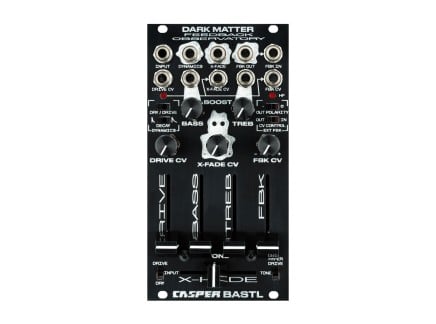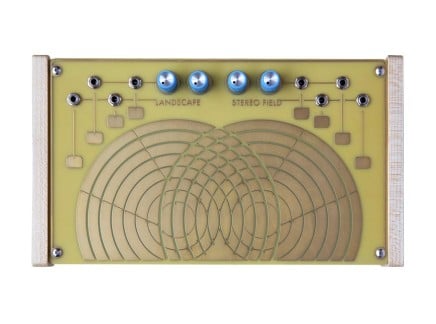Most audio engineers agree that feedback is undesirable within the context of specific applications, such as public speaking or singing. The advent of telephonic communication at the end of the Nineteenth Century cultivated a desire for clean, noise-free signal channels, which facilitated the creation of sophisticated audio recording, amplification, and treatment tools such as directional cardioid microphones, electronic devices such as equalizers and limiters, and more recently automatic feedback detection devices and software.

In contrast to this desire for acoustic clarity, musicians throughout history have mobilized feedback in various ways for aesthetic purposes. In the West this engagement famously blasted into the mainstream during the 1960s with artists such as The Beatles, Jimi Hendrix, and Robert Fripp ushering in expressive feedback-based performance techniques. Conversely, textural forms of feedback engagement emerged in the works of Robert Ashley, John Cage, Toshimaru Nakamura, and others.
Academic Beginnings
The end of the Nineteenth Century saw the introduction and rapid development of sound reproduction technology alongside other pillars of modernity such as photographic equipment and transcontinental transportation systems. The introduction of telephonic communication systems established acoustic feedback as a natural byproduct, as the then-primitive communicatory systems lacked the equalization safeguards they currently enjoy. In 1911, Danish scientist Søren Absalon Larsen outlined the principles of feedback, which is why the phenomenon was subsequently dubbed the “Larsen Effect”.
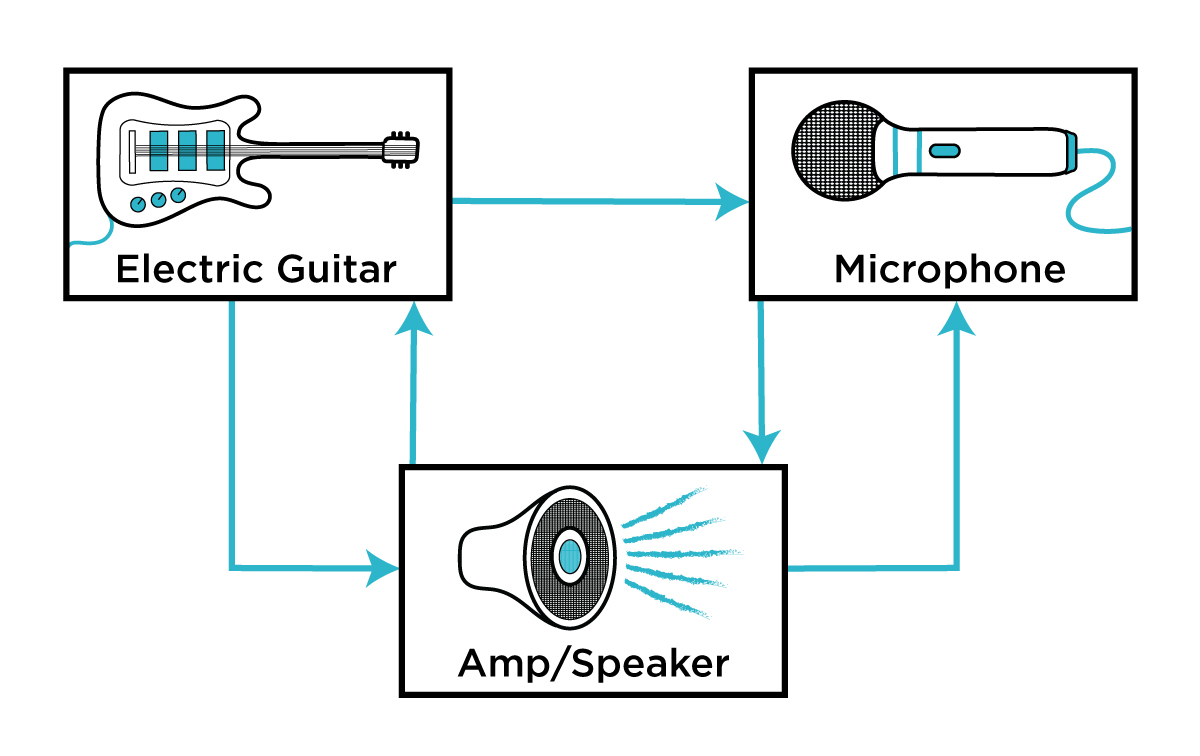
The Larsen Effect delineates feedback as a positive loop gain that occurs when a sound loop exists between an audio input (microphone, guitar pickup, etc) and an audio output. For example, imagine a traditional professional amplification setup, where an audio signal is received by a microphone and amplified via loudspeaker. The sound emitted from the loudspeaker is received by the mic again, amplified further, then processed through the speaker again. This movement generates a feedback loop where the frequency of the resulting sound hinges on several factors: the acoustics of the enclosing room, resonant frequencies (in the microphone, amplifier, and loudspeaker), directional pick-up and emission patterns of the microphone and loudspeaker, and the distance between all components and objects.
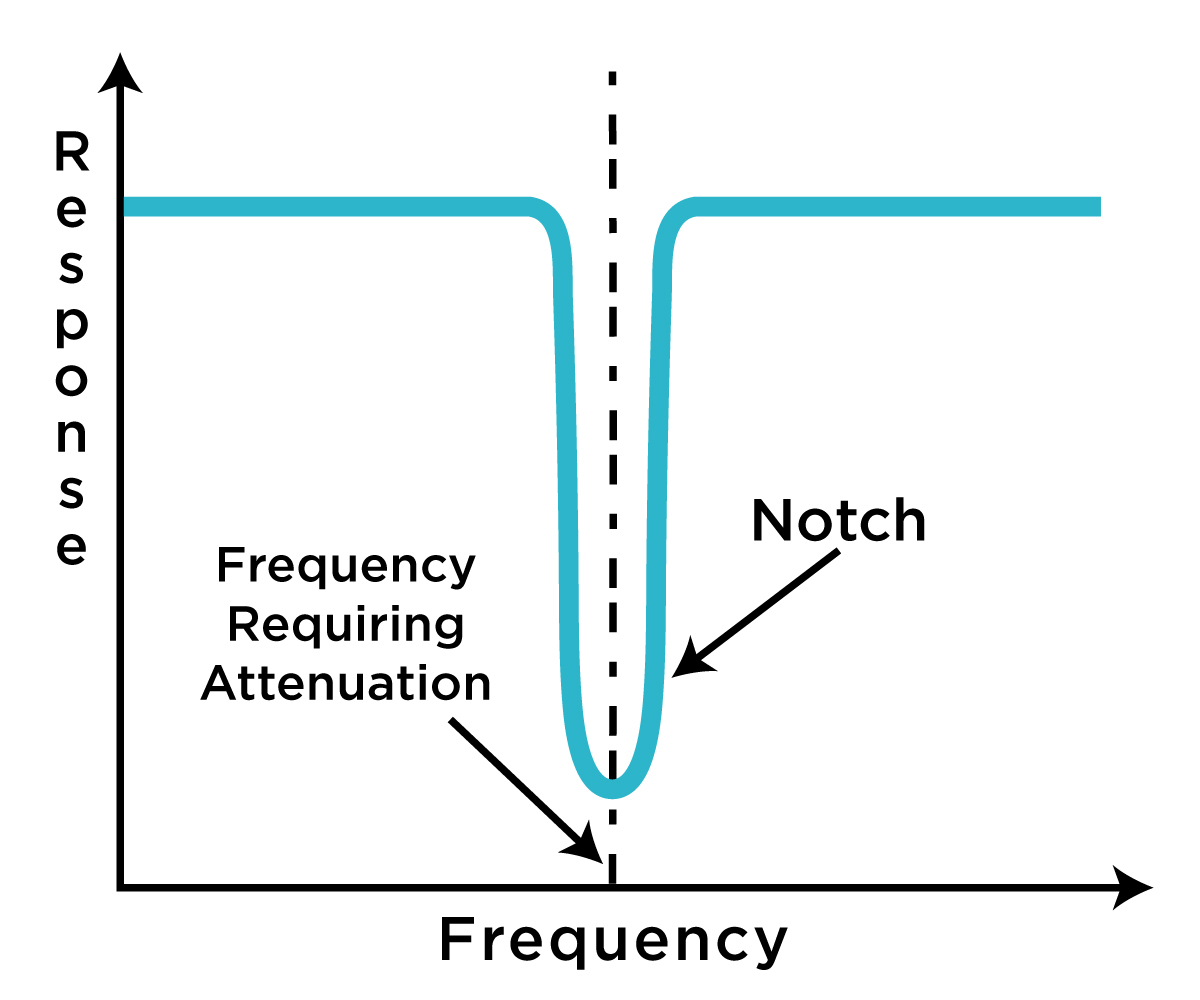
Later, further academic research was perpetrated by acoustical equalization guru Dr. C. Paul Boner, who discovered that feedback occurs at a specific frequency and can be stopped by introducing a notch filter tuned to that precise frequency into the loudspeaker’s signal chain. Boner subsequently collaborated with Gifford White, one of his former students, to engineer custom notch filters designed to negate specific frequencies in specific rooms. This was initially applied to public address systems and led to the establishment of rudimentary theories of acoustic feedback, room-ring modes, and in situ equalization techniques.
The Fundamentals of Feedback
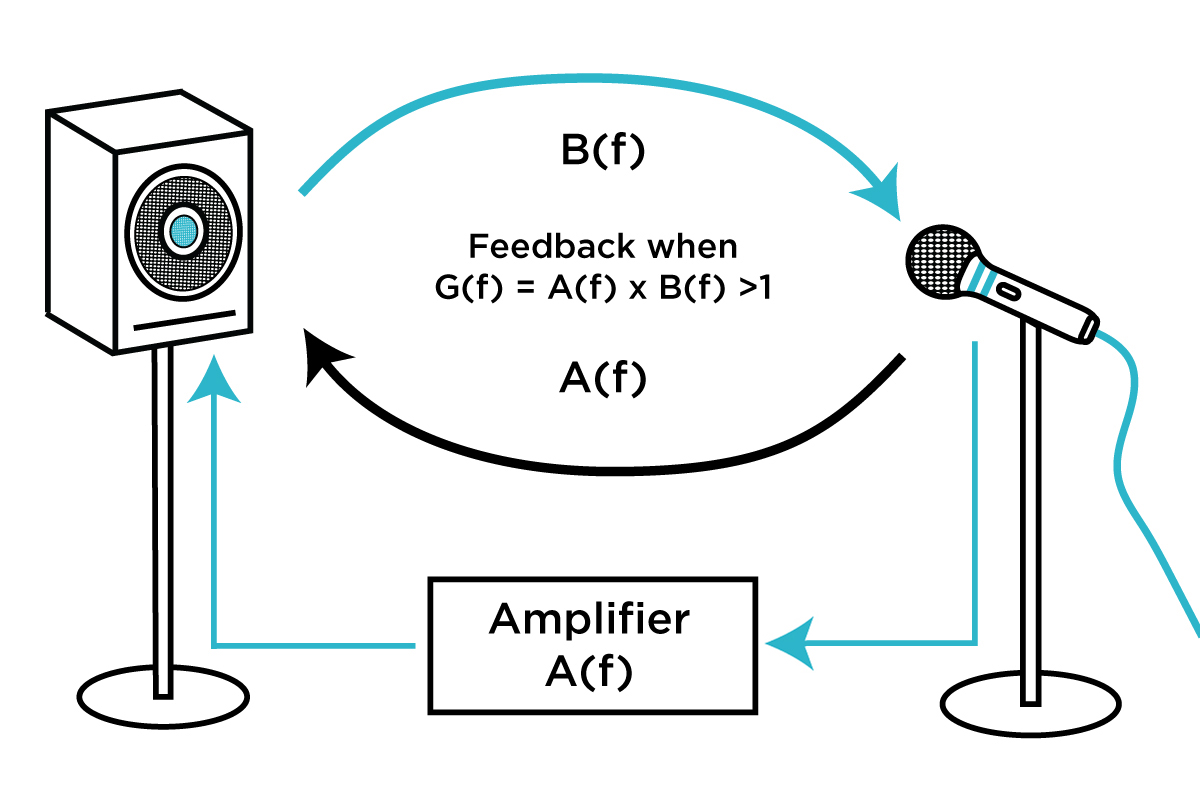
Structurally, acoustic feedback is essentially an oscillator that produces vibrations as it circulates through the microphone, speaker, and amplifier configuration. The resonance eventually congeals around a specific frequency, causing the rest of the loop to vibrate at the same frequency. For this reason, feedback loops are sometimes referred to as electromechanical oscillators. Composer Robert Ashley describes acoustic feedback as fundamental to electronic music for two reasons: that all sound produced is intrinsic to the loudspeaker / amplifier / microphone configuration and that a feedback loop is an inherently repetitive signal. This is similar to a purely electronic oscillator, but it also bears a mechanical aspect: the microphone's vibrations are first converted into electricity, then into sound via loudspeaker, and then back into electricity via the microphone's vibrations, and so on.
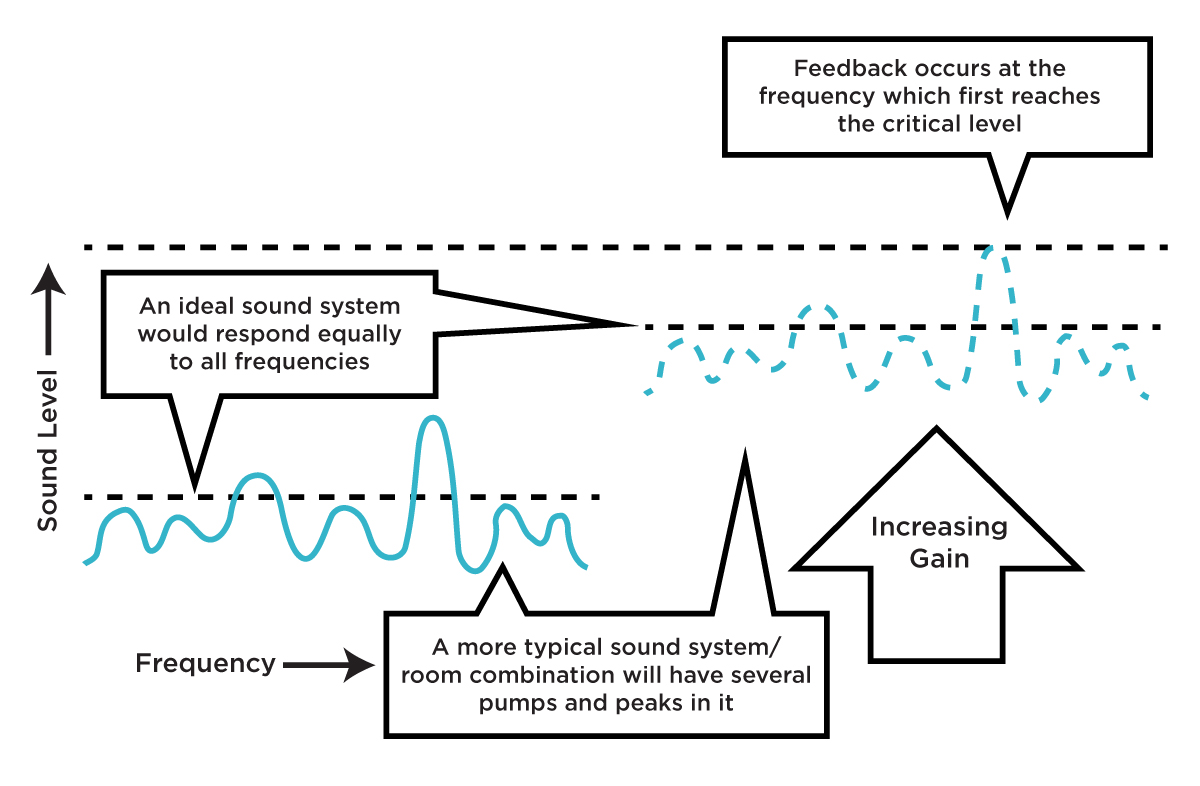
Coupling is arguably the most crucial property of any feedback system. This involves a correlation between at least two elements within the loop, such that they simultaneously affect the other by design. Think of it as a whole—that is itself comprised of individual, equally-significant components—whose behavior is dependent on the internal components' relationships to one another. Within coupled networks, a seemingly insignificant alteration in a single parameter can have drastic impacts on the overall structure. This process is not a mere summation of elements, but a synergy of sonic materials and factors.
Feedback systems fall into two categories: open and closed. These designations refer to how the system interfaces with the external environment; that is, everything that is not a part of the system itself. An open system is coupled in an external feedback loop with the environment such that the feedback itself is influenced by external factors (i.e., the aforementioned resonant frequencies, surrounding acoustics, microphone/loudspeaker pickup and emission patterns, and the distance between all components and objects). Conversely, a closed system does not exchange its components with an external environment. Nakamura’s no-input mixing setup (described below) is a classic example of a closed loop system.
Expressions and Textures: Feedback in Pop and Counterculture

Following the discovery of the Larsen phenomenon, feedback was integrated into the pop format, where it quickly became a staple of the global sonic topography. In the 1960s, acts like The Beatles and Jimi Hendrix mobilized the electroacoustic energy between their guitar pickups and amplifiers/loudspeakers to forge a new approach to Rock n’ Roll. Meanwhile, at the other end of the spectrum, the works of composers such as Robert Ashley, John Cage, Steve Reich, and Alvin Lucier exploited the more textural aspects of feedback.
This schism between expressive and the textural mobilizations of feedback continues to this day. Bands like King Crimson, Sonic Youth, My Bloody Valentine, and Tool have built on the yielded knowledge and tactfully integrated feedback into the pop format to great commercial success. Conversely, the work of artists like Mark Trayle, Toshimaru Nakamura, and Keith Rowe engages the textural aspects of feedback, addressing the physicality of form and structure in lieu of expression. In Japan, this proclivity manifested in the late ‘90s as a form of experimental music known as onkyô, which in turn influenced subsequent experimental musicians such as Masami Akita (Merzbow) and Jojo Hiroshige (Hijokaidan).
Feedback Techniques: No-Input Mixing and Resampling
While the history and implications of onkyô could undoubtedly fill several books, its relevance here lies in its facilitization of no-input mixing, a feedback technique pioneered by Nakamura that involves self-patching a mixer in order to generate a closed feedback loop that can be manipulated using the mixer’s EQ section or routed to external effects processors. The channel EQ settings are typically where the pitch and rhythm control seems to be most profoundly alterable. In regards to synthesis, the no-input technique can produce the same types of sonic complexities as modular synthesizers at a fraction of the cost!
The easiest way to set up a mixer for this sort of thing is to first route one of its FX send outputs back into one of its channel inputs. This is perhaps best accomplished without external amplification, as the loudness of the signal could quickly climb to punishing extremes. Once patched, feedback can be tamed by adjusting volume, EQ, and effects settings to taste. Due to the fundamentally unstable nature of feedback, no-input mixing can produce results that quickly dominate the audio spectrum. Carefully monitoring signal levels is recommended.

Another popular feedback technique is resampling—which could be defined as arbitrarily, temporally displaced feedback. In technical terms, resampling occurs when an audio file is converted from one sample rate to another. In a more conventional sense, resampling involves processing a sampled sound in some way before appropriating the processed iteration as its own entity—that is, as fundamentally separate from the original sound.
The most well-known instance of resampling is probably Alvin Lucier’s “I Am Sitting in a Room”, a piece featuring a recording of Lucier’s voice that had been played back into a room, re-recorded, and on and on. This process caused specific frequencies to resonate and push Lucier’s words to the point of unintelligibility as they are subsumed by resonant harmonies and room tone. More recently, a YouTube user created a recording of themselves reading titled “Video Room 1000”; prior to its official posting, the video was uploaded, downloaded, then re-uploaded 1000 times over one year. The result is a compelling example of digital artifacting of both audio and video.
Modern Feedback Instruments
The advent of feedback-centric production techniques means that more and more device manufacturers are applying that approach to their products; the Stereo Field touchplate feedback device from Landscape is a prime example. It houses two analog preamplifier circuits that are accessible using a constellation of touchplates. These touchplates are connected to the most crucial parts of the thing’s circuitry such that the user can place multiple fingers (or other objects) on different plates to form delectable feedback flavors that change in tandem with placement.
 The Landscape Stereo Field is a modern feedback device that responds to touch. We in no way recommend or endorse the use of biological organisms for this purpose. No fishes were harmed in the making of this photo.
The Landscape Stereo Field is a modern feedback device that responds to touch. We in no way recommend or endorse the use of biological organisms for this purpose. No fishes were harmed in the making of this photo.
Another relevant, albeit unintentionally, feedback-centric device is the Colour Box from JHS Pedals. While the no-input mixer configuration was not necessarily an intended feature, it is a byproduct of the way the circuit works and will thus serve such applications valiantly. Based on the vintage Neve preamp, which was used by countless artists in the 1960s and beyond but perhaps most famously on The Beatles’ “Revolution”. In addition to pristine circuitry, Colour Box boasts a Lundahl transformer for extra dimensionality. It features two preamp stages that can take the signal all the way to 39dB, effectively facilitating a powerful means of headroom control that allows one to effectively shape the output signal to taste—a very useful feature in regards to feedback construction. Adding to this versatility is a Baxandall-style EQ circuit—which allows for effective shaping of lows, mids, and highs—and a highpass filter with a range of 60Hz to 800Hz.
Recently, Czech company Bastl Instruments released Dark Matter, a eurorack optimized feedback processor under full voltage control. It features slider-controlled operation and 4 flavors of overdrive. There’s also a 2-band EQ and integrated envelope for exemplary feedback wrangling.
One of the most idiosyncratic components of audio feedback as perceived by a listener is the in situ experience. To provide as much emersion as possible, here is a curated playlist consisting of some stellar feedback-oriented tracks.

